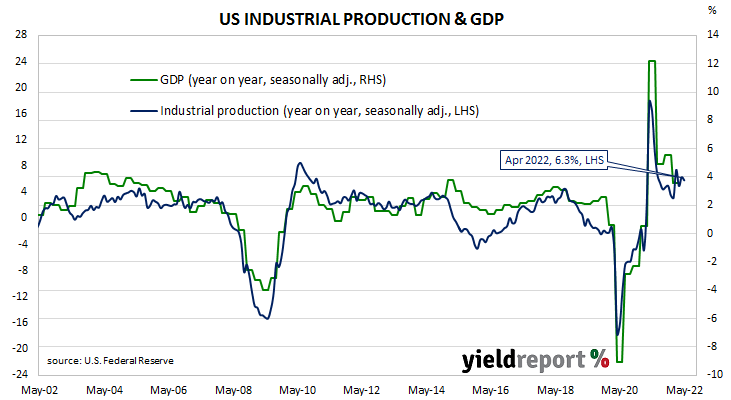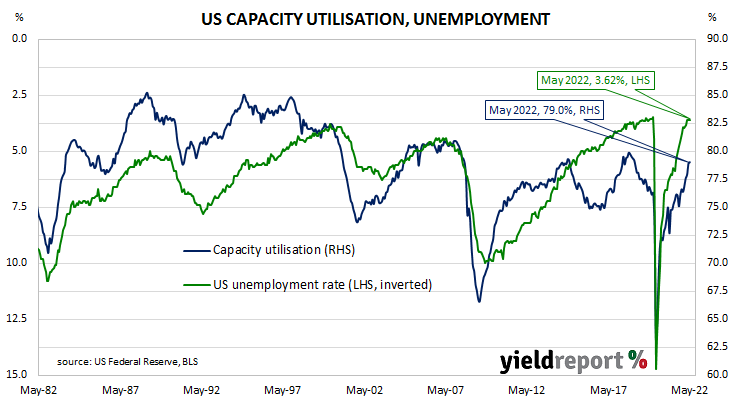Summary: US industrial output up 0.2% in May, below market expectations; up 5.8% over past 12 months; driven by falls in publishing, logging; capacity utilisation rate up 0.1ppt to 79.0%, still short of long-term average.
The Federal Reserve’s industrial production (IP) index measures real output from manufacturing, mining, electricity and gas company facilities located in the United States. These sectors are thought to be sensitive to consumer demand and so some leading indicators of GDP use industrial production figures as a component.
US production collapsed through March and April of 2020 before recovering the ground lost over the fifteen months to July 2021.
According to the Federal Reserve, US industrial production expanded by 0.2% on a seasonally adjusted basis in May. The result was less than the 0.5% increase which had been generally expected and well below April’s 1.4% jump after it was revised up from 1.1%. On an annual basis, the growth rate slowed from April’s revised figure of 6.3% to 5.8%.
“The weakness in manufacturing was driven by falls in publishing and logging,” said ANZ Head of Australian Economics David Plank. “Production of wood products fell 2.6%, which reflected the weakness in housing starts as residential construction weakens.”

US Treasury bond yields moved considerably higher, especially at the short end. By the close of business, the 2-year Treasury yield had jumped 9bps to 3.19% while 10-year and 30-year yields both finished 3bps higher at 3.23% and 3.28% respectively.
The same report includes US capacity utilisation figures which are generally accepted as an indicator of future investment expenditure and/or inflationary pressures. Capacity usage had hit a high for the last business cycle in early 2019 before it began a downtrend which ended with April 2020’s multi-decade low of 64.2%. May’s reading increased from April’s revised figure of 78.9% to 79.0%, still short of the long-term average of 80.1%.
While the US utilisation rate’s correlation with the US jobless rate is solid, it is not as high as the comparable correlation in Australia.


